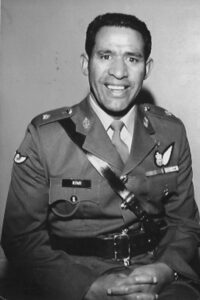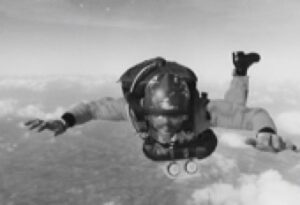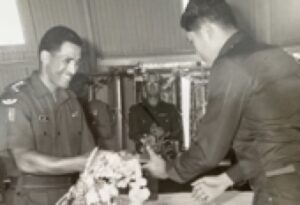
Greetings fellow Clubbies.
It was good to have had an ANZAC day which was able to be commemorated in the way we traditionally have, after last year’s COVID-affected events. Looking at our Facebook group site, I could see that we participated in ceremonies throughout here and Australia by parading, attending, and addressing gatherings.
 Ardagh Class's Neil (Mac) MacMillan's daughter Nancy gave the address at the Okaihau (Northland) parade. Our patron, Bob Davies, gave a presentation at the de facto Taupo RSA, the Onward Bar, and made the TV news. Bob’s address (which was also delivered at the Nelson ceremony by Colonel Bernie Isherwood - see https://www.stuff.co.nz/national/300285959/anzac-day-13-people-set-out-for-mt-ruapehu-in-1990-but-just-7-returned-alive, focused on an act of soldier heroism that happened in peacetime at home. It has to-date been underwhelmingly recognised by our government.
Ardagh Class's Neil (Mac) MacMillan's daughter Nancy gave the address at the Okaihau (Northland) parade. Our patron, Bob Davies, gave a presentation at the de facto Taupo RSA, the Onward Bar, and made the TV news. Bob’s address (which was also delivered at the Nelson ceremony by Colonel Bernie Isherwood - see https://www.stuff.co.nz/national/300285959/anzac-day-13-people-set-out-for-mt-ruapehu-in-1990-but-just-7-returned-alive, focused on an act of soldier heroism that happened in peacetime at home. It has to-date been underwhelmingly recognised by our government.
Another ANZAC Day address that interested me was delivered at Eastbourne - see photo of the Eastbourne War Memorial below - by my son-in-law, who is principal of a large boy’s secondary school. His speech focused on the sacrifices that are experienced in schools, families, and communities, when former students go off to war and don’t come back (or do so as broken souls). He relayed the story of an Eastbourne family, one of whose sons - an old boy of the school - died at Passchendaele on 12 October 1917 (along with 5 others from Eastbourne).
He also paid tribute to his predecessor of 100 years ago who had actively encouraged the school’s graduates to enlist and go to war. The names of old boys who had perished were regularly read out at the School's assemblies, but as the losses grew, the headmaster channelled his growing sense of personal and school loss into organising the building of a war memorial hall to commemorate the old boys' war-dead. As my son-in-law stated in his address “More than most, he understood the scale of the loss of potential, creativity, and leadership which was a result of the war.”
Tribute - One of Our Own
Major Albert Reti Kiwi, RNZIR, NZSAS, RA Inf, Weir Class 1958
 Alby enlisted into Weir Class of the RF Cadets on 29 January 1958, initially stating his name as Albert James Kiwi. He later changed his name to Albert Reti Kiwi in accordance with his birth certificate.
Alby enlisted into Weir Class of the RF Cadets on 29 January 1958, initially stating his name as Albert James Kiwi. He later changed his name to Albert Reti Kiwi in accordance with his birth certificate. Interestingly, his birth date is given as 15 March 1940 however according to his wife Cheryl he was actually born in 1942 and put his age up to join the army. Others have confirmed this.
Interestingly, his birth date is given as 15 March 1940 however according to his wife Cheryl he was actually born in 1942 and put his age up to join the army. Others have confirmed this.
Alby graduated into the NZ Regiment in 1959 and in 1960 was posted to the 1st Battalion, the NZ Regiment in Taiping Malaya. He returned to New Zealand in 1961.

In June of that year he attended the Officer Cadet School in Portsea Australia, graduating in June 1962 as a 2ndlieutenant. During the period July 1962-January 1963 Alby was posted to National Service Training Unit (NSTU) Waiouru. His next posting was to the 2nd Battalion, NZ Regiment in Burnham before returning to the 1st Battalion in Malaya now in Terendak in Malacca on promotion to lieutenant. He returned to New Zealand in November 1965.

Alby successfully completed the Special Air Service selection course and was posted to 1 Ranger Squadron, NZSAS in Papakura in January 1966.
In June of that year he was posted to Borneo as a member of 4 Detachment NZSAS for a 6 month tour. After Borneo and over the period December 1966 – January 1967 he was attached to the Jungle Warfare School in Johor Bharu, Malaysia with the British Army.
Detachment NZSAS for a 6 month tour. After Borneo and over the period December 1966 – January 1967 he was attached to the Jungle Warfare School in Johor Bharu, Malaysia with the British Army.
Alby remained with 1 Ranger Squadron until October 1967 when he was posted to Headquarters 1 Infantry Brigade as a staff officer in the rank of captain. In August 1969 Alby was posted as a Parachute Jump Instructor to the Parachute Training Support Unit in Whenuapai where he remained until January 1970 when he was again posted to NSTU Waiouru.
Between October 1970 and October 1971 Alby returned again to the Jungle Warfare School in Johor.
In November 1971 Alby was posted to 1 New Zealand Army Training Team Vietnam in Chi Lang, South Vietnam. The team helped train South Vietnamese platoon commanders in weapons and tactics. On the departure of the OC later that year Alby took command of the Team in the rank of major.
 He returned to New Zealand in December 1972 to 1 Ranger Squadron as the officer commanding and then in January 1974 to 2/1 RNZIR, Burnham, as a company commander. He served there until April 1979 when he resigned from the Army.
He returned to New Zealand in December 1972 to 1 Ranger Squadron as the officer commanding and then in January 1974 to 2/1 RNZIR, Burnham, as a company commander. He served there until April 1979 when he resigned from the Army.
 For some years as a result of an initiative by the then Chief of General Staff, Major General Ron Hassett, fund raising had begun to establish an Army Museum at Waiouru. No Defence money could be used and the museum was funded almost entirely through donations. Spearheaded by a well-publicised run across New Zealand by Alby and his dog Freefall, fundraising got underway. The builders followed and Army Engineers and voluntary labour completed the fortress-like structure in just 276 days in 1978. Alby and Freefall were regularly seen on TV as he made his way along the length of the country from Bluff to Cape Reinga. Freefall had special boots made for this epic journey.
For some years as a result of an initiative by the then Chief of General Staff, Major General Ron Hassett, fund raising had begun to establish an Army Museum at Waiouru. No Defence money could be used and the museum was funded almost entirely through donations. Spearheaded by a well-publicised run across New Zealand by Alby and his dog Freefall, fundraising got underway. The builders followed and Army Engineers and voluntary labour completed the fortress-like structure in just 276 days in 1978. Alby and Freefall were regularly seen on TV as he made his way along the length of the country from Bluff to Cape Reinga. Freefall had special boots made for this epic journey.
Alby was enlisted into the Australian Army in March 1980 in the rank of major. He was posted as the Staff Officer Training, Headquarters, Cadet Group, Melbourne. In November 1980 he was appointed Battalion Commander of the Army Apprentice School in Balcombe Victoria and then in February 1982 as Officer Commanding the Training Wing of the Parachute Training School in Williamstown, New South Wales.
On 17 November that year he was tragically killed in a parachute accident leaving behind his wife Cheryl, a daughter Michelle and son James. He was (officially) just 42 years old. His ashes are interred on the Waikare Marae at Waikare in the Bay of Islands.
Major Albert Reti Kiwi sought adventure and  challenges throughout his military career. His humility, calm demeanour, and no-nonsense approach to military life set him apart from most. Michelle said of her father:
challenges throughout his military career. His humility, calm demeanour, and no-nonsense approach to military life set him apart from most. Michelle said of her father:
Alby's achievements within the military gave him a great sense of satisfaction. His continuous push for always being a better person than he was the day before is something that many people speak of to this day. A proud Maori military man.
He aha te kai a te rangatira?
He korero he korero he korero.What is the food of the leader
It is knowledge it is communication.
Truly an exemplar of the Regular Force Cadet School, one we can all take example from and much pride in. As the engraving on his headstone notes: ‘His life will be remembered’. Forte Fortuna Juvat.
Thanks to Bob Davies for compiling this tribute.
Gallipoli's NZ Casualties
The ANZAC Day addresses referred to above reminded me of a poem I wrote 3 or 4 years ago. It focuses on the casualties of war, including those at home and those who made it home:
Battlefield statisticians
were good
at counting casualties -
2, 779 died
4, 852 wounded
67 % missing.
Categories
for how our soldiers expired
were compiled -
died of wounds
died of sickness
died of other causes
just plain killed.
After, when the stench
from the trenches resiled
and the rats and the flies
ran out of flesh to defile,
artefacts for the dead
were erected on the Peninsula -
Headstones
Cemeteries
Memorials to the Missing.
With no bodies for burial,
home soil saw proliferation of -
War Memorials
Rolls of Honour
Gardens of Remembrance.
Other consequences
attributable to the Expedition
went uncounted -
holes in the fabric of families
women unwed for the lack of men
bedrooms preserved in memory of sons
suicide of boys-school headmasters
(they'd blown the recruiter's bugle)
premature ends of those at home
(and those who made it back) -
died of despair
died of brokenness
died of sick in the head.
